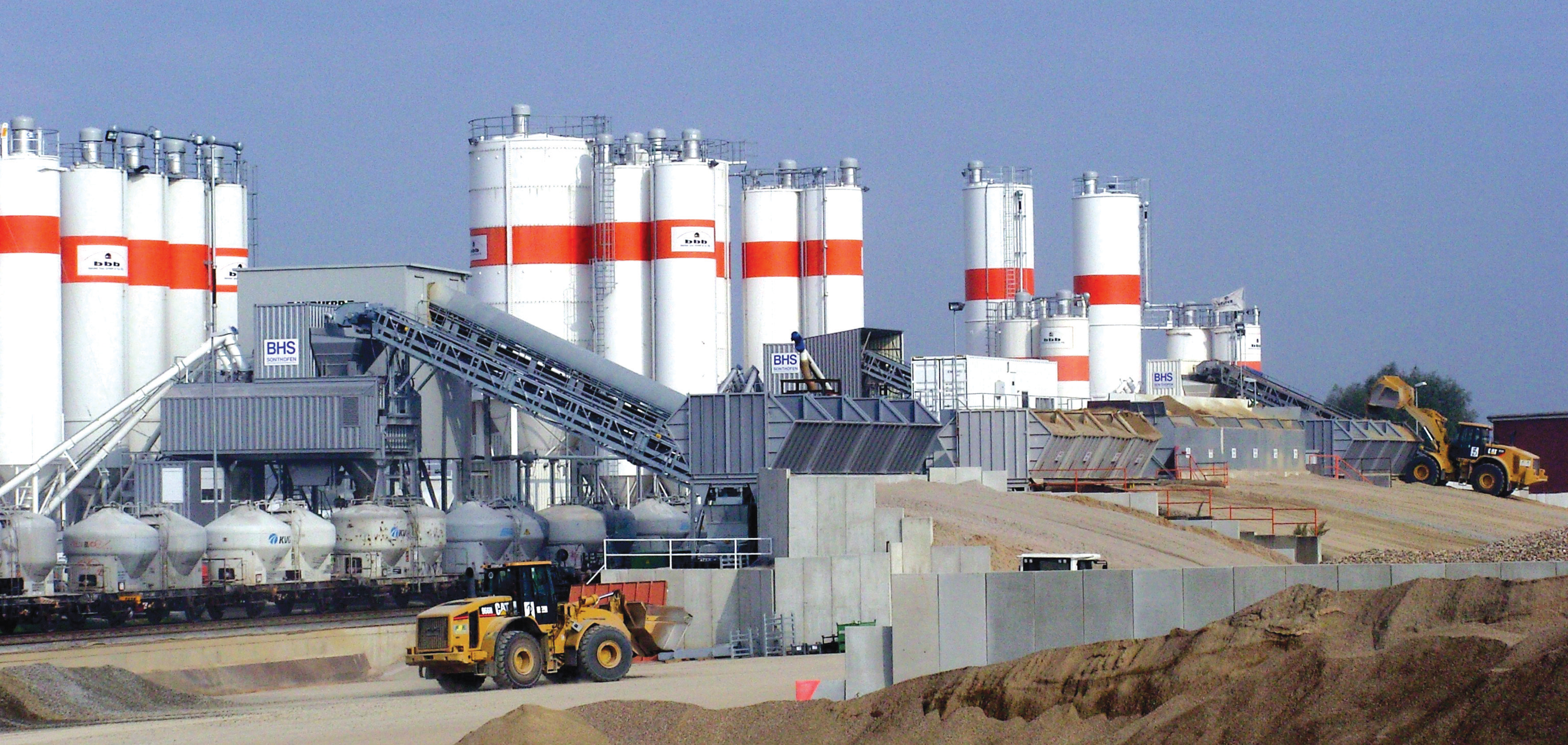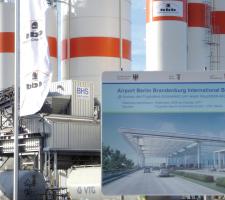
Three BHS mixing plants are producing concrete for the new Berlin-Brandenburg International Airport
Mobile high-capacity concrete mixing plants from
The future airport is located adjacent to the existing Berlin-Schoenefeld Airport. Two BHS Twinmix 3,00 CB plants and one BHS Monomix 3,33 CB are at work on the site and the three together are capable of producing up to 650m³ of compacted concrete per hour.
The units are built to a modular containerised system, designed to give benefits to the plant operator, including efficiency, ease of maintenance and a high degree of mobility, with set-up and dismantling times of approximately 1.5 days each. This will enable the equipment to be relocated easily to another site once the airport is complete. All components have a maximum transport width of 3m and no foundations are required to set up the mixing plant. This increases the flexibility in choosing where to position the units, particularly for temporary installations. All connections, including those for electric and pneumatic supplies, have been designed with plug-type connectors for quick and easy installation using established twist lock elements.
Each mixing plant is fully enclosed, giving weather resistance even in exposed conditions.
The first BHS Twinmix for the new airport was handed over in mid-October 2006 and was formally inaugurated on 26 October. The first foundations for the project were poured with concrete produced by this BHS Twinmix plant, marking the start of what would be many batches mixed for the project. Up to 10,000m³ of concrete a day will be required during the airport's construction, which is scheduled for completion in 2011.
To satisfy this high demand, additional concrete mixing plants were urgently required and successful experience with the initial Twinmix led to the selection of further BHS mixers. The plants produce a wide range of concrete qualities, from C8/10 up to high-strength C100/200 micro silica concrete.
Particular attention is being paid to environmental aspects in the supply of raw materials as approximately 3.4 million tonnes of cement, sand, gravel and aggregates are required for the airport's construction. Examples of the environmental measures adopted have included delivering the aggregates by rail, thus removing up to 500 truck trips a day from local roads.
The BHS mixing plants are equipped with containers for the mixer platform, the weighing platform, the control room and the chemical storage. Each container element is completely pre-installed at the factory. Interfaces for assembly or dismantling have been kept to a minimum, being reduced to the connections between the containers. Mechanical equipment and control elements are securely installed in the container to ensure secure protection during relocation of the plant. The BHS Twinmix is essentially a double Monomix, equipped with a single in-line aggregate storage and with a slewable belt conveyor for feeding both mixers alternately.
The model number refers to the mixer size and the BHS Twinmix 3,00 CB and BHS Monomix 3,33 CB models at work at the airport produce batch sizes of 3m3 and 3.33m3. The Monomix 3,33 CB is capable of producing 133m3 of compacted concrete an hour while the two Twinmix mixers can each supply 240m³. The range of mobile containerised concrete mixing plants comes in various sizes, including two larger models that have been introduced this year with mixer sizes of 4m3 and 4.5m3. The new models have the same features as the smaller units, including the same 3m maximum transport width.
Although designed to provide mobility, BHS says that the range is also suitable for use in stationary applications.
















